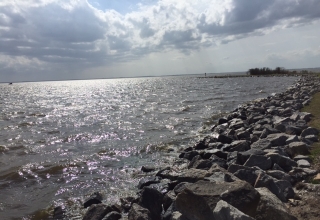
The Paradoxical Self
Quad Four is a source of surprise, of learning and of nurturance in the individual psyche and relationships in large part because it is the repository of content and dynamics processes that contrast with and often offset or counterbalance the content and processes of one or more of the other three quadrants—especially Quadrant One. We live in paradox as a result of the elements of Quad Four. Paradox exists not only because of the contrast, but also because Quad Four is dependent on the other three quadrants. It exists in opposition to the other quads. Jungians suggest that the brighter (more powerful) the light (Quad One), the darker (more powerful) the shadow (Quad Four). The more Jack Parr would be upset with and try to control Jonathan Winters, the more outrageous Jonathan Winters became. The more that rebellious comedians (like Lenny Bruce and Mort Sahl) are criticized and “repressed” by the press and critics, the more outrageous and unbridled they become. The dark needs the light and the light needs the dark.
In a human interaction, Quad Four is increasingly powerful if both parties to the interaction deny its existence. Both parties are “too busy” to worry about “unconscious stuff.” Neither wants to appear “irrational” or “inappropriate” in this relationship. The usual assumption is: “if we don’t talk about it, maybe it will go away and we can assume that it never existed in the first place.” The truth about what is happening in the relationship is pushed from both Quad Two and Quad Three to Quad Four. Such is the dynamic that operated in many Victorian novels: something is happening that is unmentionable; hopefully, this is only a temporary yearning or (better yet) “a figment of our imagination(s).”
Often the self-contradictions are only apparent when Quad 4 is made more conscious. The contradictions seem to erupt out of nowhere when Quad 4 is blocked off. Quad 4 is challenging not only because its content may be scary or unanticipated, but also because it often makes a paradox more explicit. Quad Four, after all, is the realm of images. Contradictions and paradoxes that can be reasoned away in the more conceptual world of the first three quadrants are more vivid and less amenable to conceptual manipulations in Quad Four. These paradoxes stand out clearly: two powerful forces situated on two hilltops ready to go to war over a principle, a course of action, a desire. These paradoxes specifically seem to play out in four domains. We will borrow from the work of a remarkable social systems analyst, Talcott Parsons, in identifying and describing these four domains (Parson and Bales, 1955). Parsons suggests that any social system consists of four domains: adaptation, goal-attainment, integration and latent pattern maintenance.
The Adaptive Paradox: The first domain—the adaptive system—focuses on the creation of resources. It is in the business of importing resources from outside the system or cultivating resources from inside the system. Parsons identifies this as the agricultural subsystem in a society. The paradox inside a relationship inevitably centers, in part, around this adaptive function. What is it that nourishes our relationship? Is it those aspects of our relationship that we intentionally import or cultivate—such as our trustful disclosure and feedback—or is it something that remains mysterious and, ultimately, unknowable?
1K Club



















